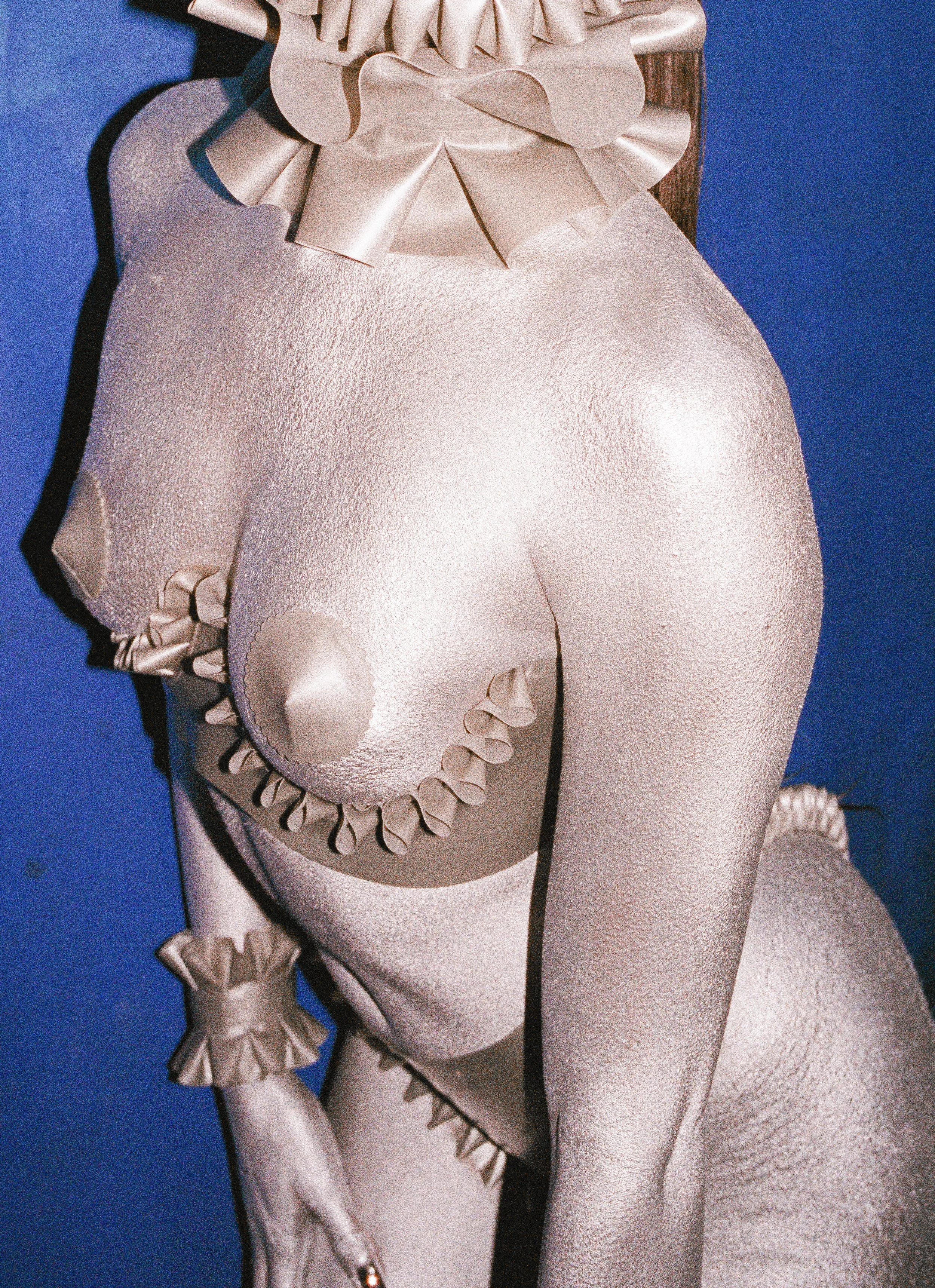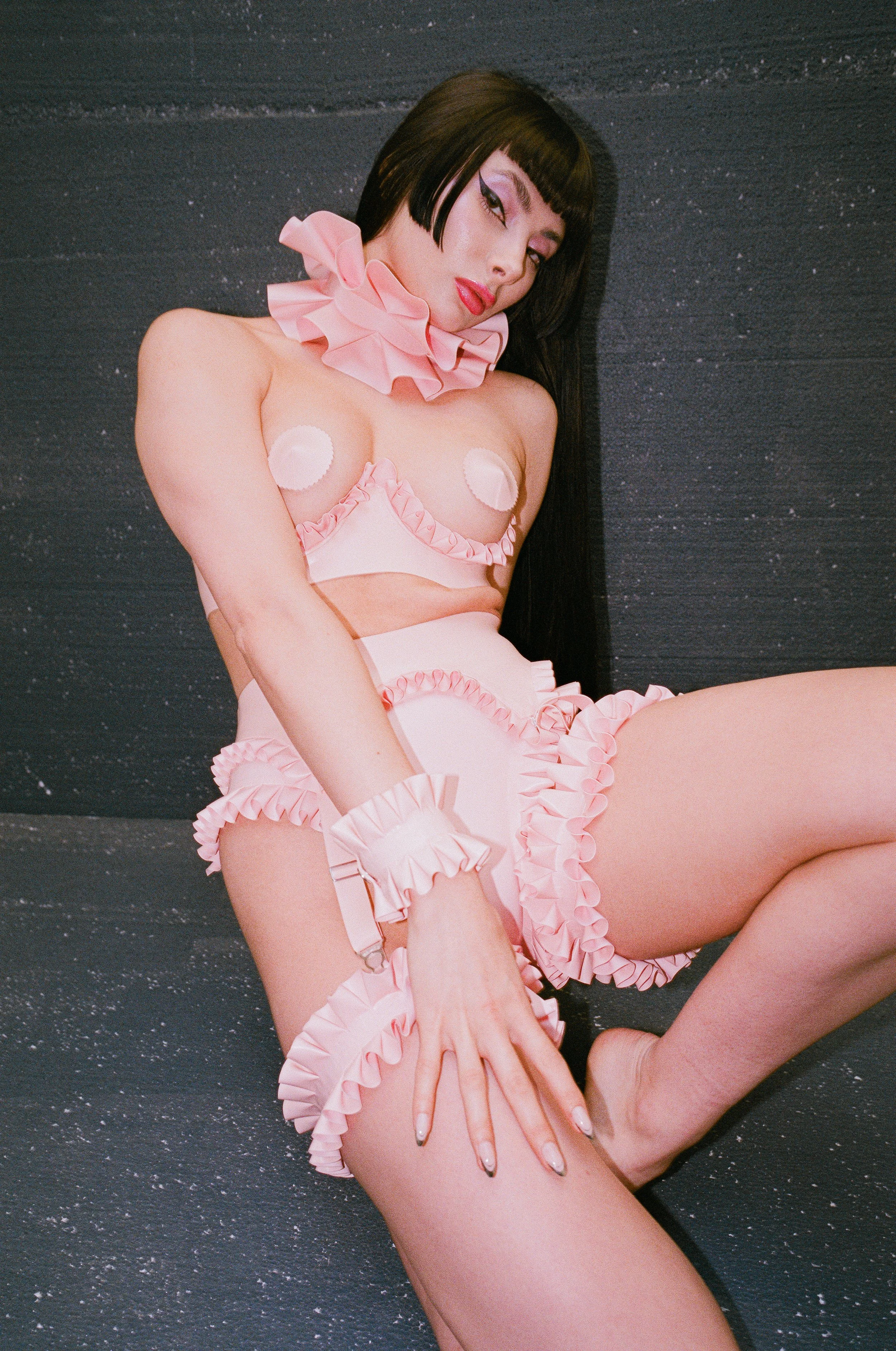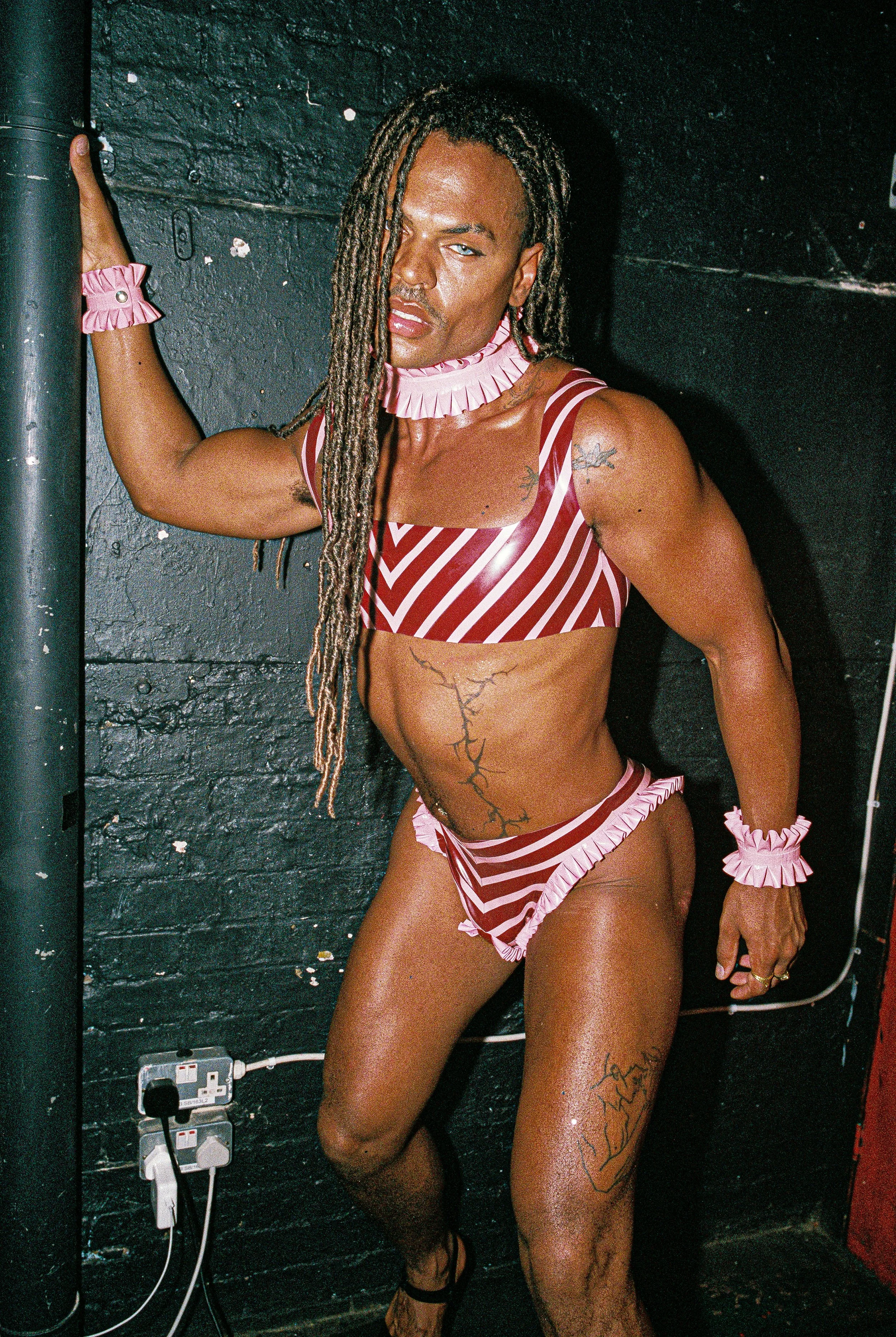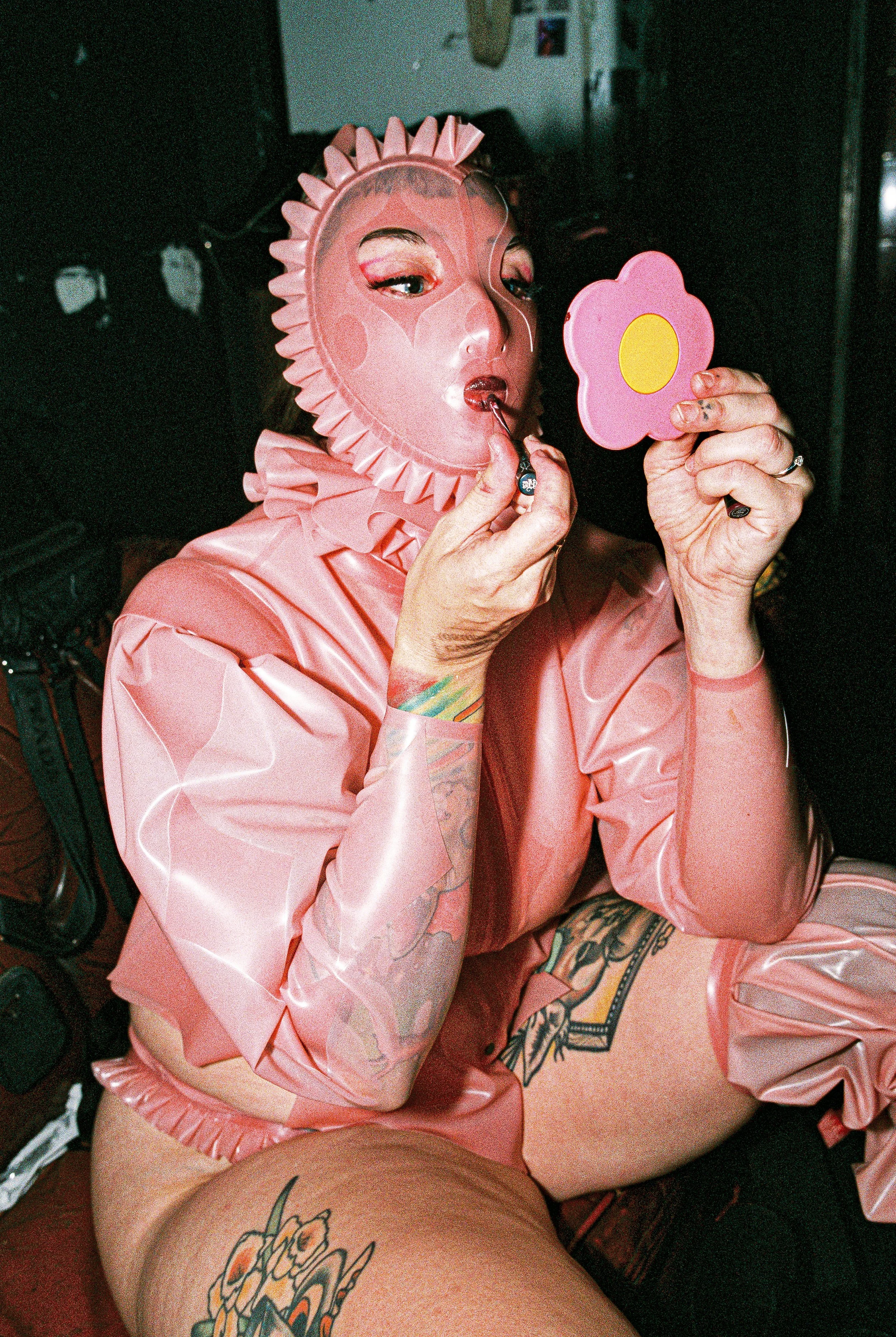From Fetish to Fashion: Soft Skin Latex
Designer: Soft Skin Latex @softskinlatex by Gemma Pickerill
Photography: Ollie Dove @ollie.dove
Article: Jess Barker @jess.barks
Image 1: Model @sweet.severine, H&MUA Raphael Arcadios @raphael.arcadios
Assisted by Kuba Iwan @mistraty Latex has long been synonymous with the world of fetish and dominatrix, an underground culture where it served as a bold expression of power, sensuality, and rebellion. For decades, this glossy, skin-tight fabric was relegated to the shadowy corners of sex parties and the dominatrix’s lair, a visual shorthand for all things taboo. However, in recent years, latex has begun a remarkable transformation, shedding its restrictive stereotype and emerging as a fabric that’s not only mainstream but also versatile and surprisingly wearable. This evolution pays homage to its origins while redefining its place in the world of fashion.
The fetish community has always been the incubator for latex fashion. Here, latex was more than just clothing; it was an identity, a symbol of liberation, and a medium for pushing the boundaries of conventional aesthetics. Designers and artisans within this community crafted garments that were as much about the wearer’s power and sexuality as they were about the material itself. Latex allowed for a second-skin experience, creating an intimate connection between the body and the garment. Icons like Bettie Page and later, designers like Atsuko Kudo, brought latex into the cultural lexicon as a statement of sexual empowerment and subversive allure. The fetish scene celebrated the body in its rawest form, using latex to enhance the natural curves and lines, making it a fabric of fascination and fantasy. The underground scene, with its embrace of the bold and the unconventional, was crucial in nurturing latex’s early identity.
As latex began to attract attention from the fashion mainstream, designers sought ways to make it more accessible and comfortable for everyday wear. Enter SoftSkinLatex —a new wave of this iconic material that retains its sensual appeal while offering a softer, more breathable experience. Unlike the traditional, sometimes unforgiving latex, soft skin latex is designed with comfort and flexibility in mind. It's lighter, more pliable, and allows for greater movement, making it suitable for a variety of settings beyond the fetish scene. “Fetishism is not just an aesthetic or fashion trend to me; it’s a subculture and a community, and I always want to respect that,” Pickerill emphasised in a 2021 interview. Brands like SoftSkinLatex have been at the forefront of this movement, curating collections that are as suitable for a summer wardrobe as they are for a club night. As featured in Bricks Magazine, this new latex is being styled in ways that are playful and chic, offering pieces that range from casual tops and skirts to more avant-garde designs. This transformation signals a departure from the heavy, restrictive garments of the past to a more diverse and wearable interpretation of latex.
The journey of latex from the underground to the runway is a testament to fashion’s cyclical nature and its ability to reinvent and contextualise materials. In recent years, latex has been embraced by high fashion, seen on the likes of celebrities such as Kim Kardashian, Beyoncé, and Lady Gaga. These appearances, as chronicled by Vogue, have helped shift public perception, presenting latex as a fabric that can be elegant, sophisticated, and even glamorous. Designers are now using latex in innovative ways, integrating it into ready-to-wear collections that challenge the fabric’s traditional connotations. It’s being paired with delicate fabrics, layered over casual pieces, and used in tailored silhouettes, demonstrating its versatility and potential for everyday fashion. This mainstream acceptance of latex doesn't strip it of its erotic roots but rather celebrates its duality—its power to be both provocative and polished.
Media and pop culture have played a significant role in latex's reinvention. Television shows, music videos, and red-carpet events have all showcased latex in new lights, framing it not just as fetish wear but as a bold fashion choice. Social media platforms, especially Instagram, have further democratised latex fashion, with influencers and designers like Soft Skin Latex showcasing how the material can be incorporated into a variety of looks, from casual to couture. This exposure has helped to destigmatise latex, making it a fabric that is not only accepted but celebrated for its unique properties and visual impact. The rise of soft skin latex, in particular, has made it more approachable, offering people a way to experiment with the material without the commitment or discomfort that traditional latex often entails.
The evolution of latex from its fetish origins to its current status as a versatile fashion fabric is a fascinating journey. It's a reminder of how fashion can both honor and transform its roots, taking something once considered taboo and turning it into an object of mainstream desire. The fetish community's influence on this transformation cannot be understated—it provided the foundation, the creative spark, and the audacity that allowed latex to push beyond its boundaries. Today, soft skin latex offers a new chapter for this storied fabric. It's being embraced by those who appreciate its sensuality but also by those who simply love its unique texture and look. It's a fabric that invites everyone to explore their own boundaries of style and self-expression, proving that latex is not just for the fetish world but for anyone willing to wear it with confidence and flair.






